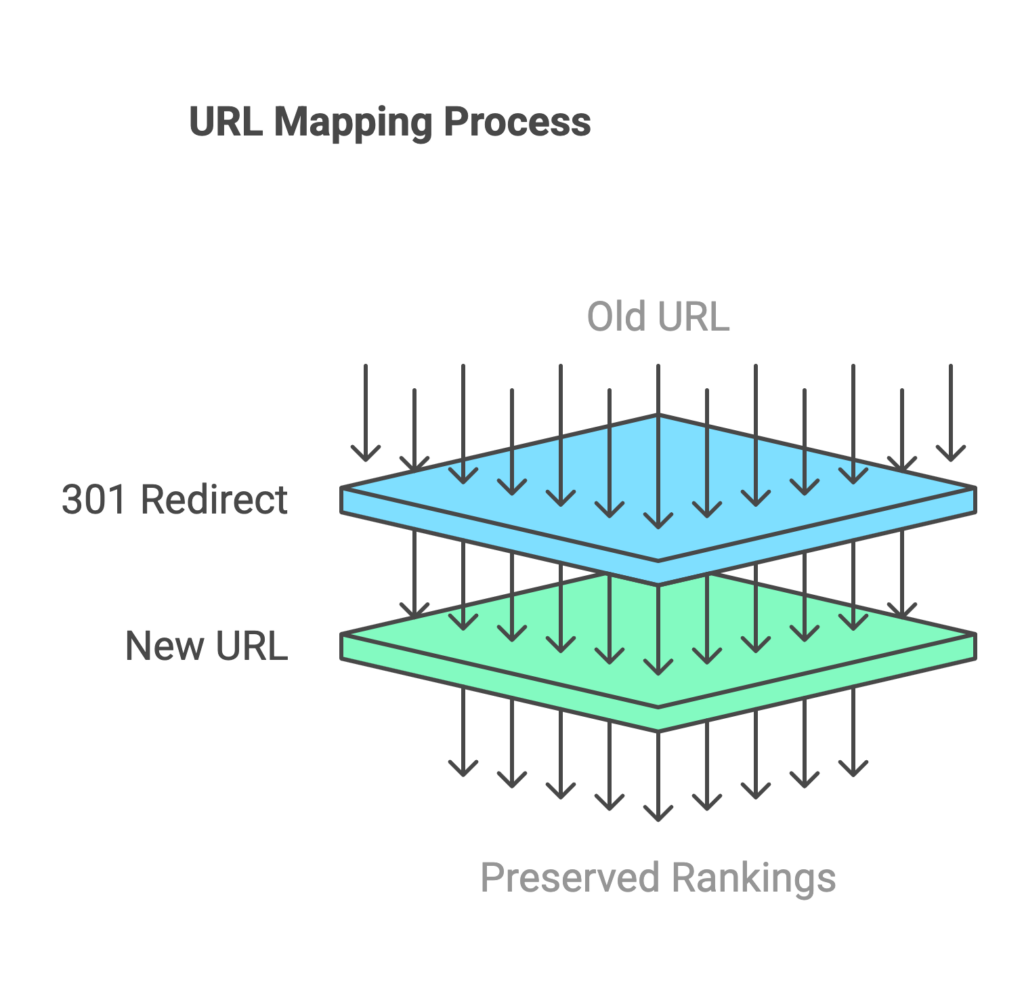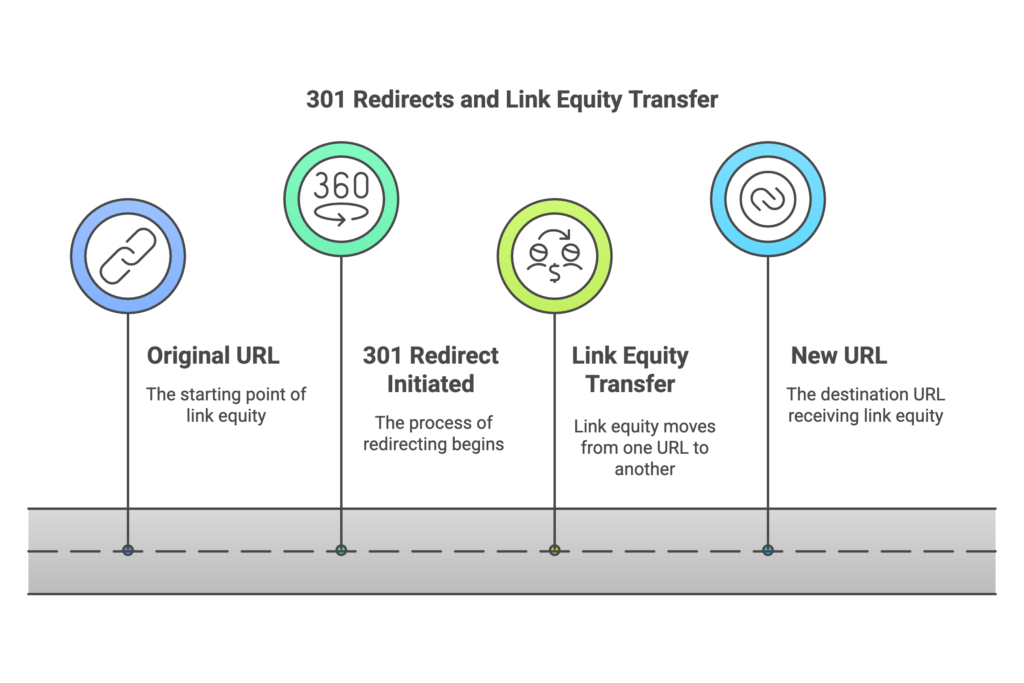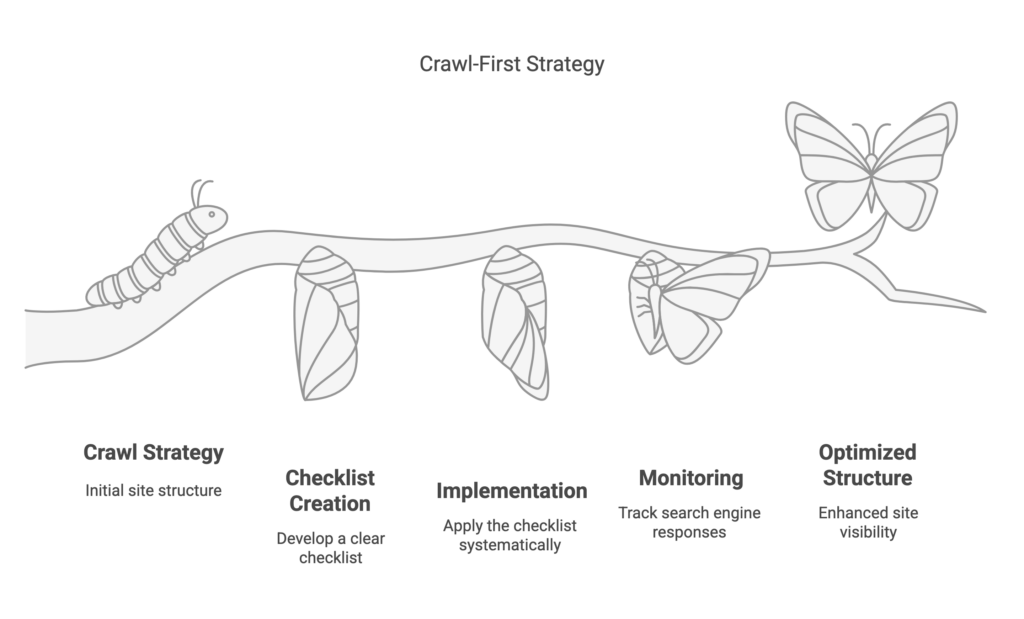How to Minimize SEO Loss During a Website Redesign: The Ultimate Guide
I’m Daniel Burns, and in this article, I’ll walk you through the must-do steps for preserving your hard-earned search engine rankings during a website redesign. I know the anxiety of watching traffic dip when a site is overhauled—that’s why I’m sharing my proven system for mapping redirects, keeping crucial technical elements in place, and ensuring your valuable content remains visible to Google. If you’re ready to protect (and even boost) your SEO while giving your site a fresh look, this short guide will show you exactly how to do it without sacrificing the equity you’ve built over time.

Daniel Burns
Chief Operating Officer / Digital Strategist

In This Story
I’m Daniel Burns, and I lead projects at Boulder SEO Marketing. I work on content marketing and micro-SEO strategies. My main focus is helping clients rank well on Google and beyond. Many of those clients arrive with a website that’s being revamped or has just been rebuilt. I’ve seen the anxiety people face when they worry about losing traffic. I always say, “It is really very, very, very important that the important steps be taken to make sure that the least amount of equity is lost.” I’ve witnessed what can go wrong, and I’ve also seen how to protect your rankings.
We recently managed a complete website redesign for one of our clients, and I’m proud to say that they experienced zero loss in SEO performance. If you’d like to see exactly how we pulled it off, check out the case study here: Denver Landscaping SEO Case Study. It’s a detailed look at our process and the steps we took to ensure the new site maintained—and even enhanced—its rankings.
What Is Website Redesign SEO, and Why Is It Important?
-
What happens to SEO during a redesign?
SEO can drop if search engines get confused by changes in your page architecture. Pages that once had strong backlinks might disappear. A clear plan helps search engines crawl the new setup. I’ve followed a “crawl-first strategy” on several projects. This approach ensures search engines track each new page correctly.
-
Why does website structure impact SEO rankings?
Your site’s architecture influences link equity and internal linking. If everything shifts without a plan, you risk losing the authority you’ve built. Redirects also matter. Moz and Backlinko both stress the value of 301 redirects during site migrations. This matters for preserving the rank you spent years earning.
-
How can a redesign create SEO risk?
Redesigns can be messy if page speed or schema is overlooked. I’ve seen broken link fixes ignored, and the result was huge ranking drops. While a new site might look great, it still needs to load fast. It also needs the right structured data. Keeping track of every detail is key.

What Are the Most Common Causes of SEO Loss in a Redesign?
The most frequent cause is broken redirects, followed by missing or changed URLs. A mismatch in content structure can also tank rankings. I’ve had clients come from agencies that overlooked link equity. Poor planning leads to big dips.
-
How does poor redirect mapping lead to ranking drops?
Redirect mapping is crucial. A “redirect matrix” links your old URLs to their new counterparts. I always emphasize that 301 redirects are how you keep your link juice. If you miss a major page, you lose authority. That’s why I say, “We make a hundred percent sure that the titles, descriptions, URL, everything…gets brought over as they are.”
-
Why is technical SEO often overlooked during redesign?
In some cases, design teams focus on colors and layouts. The technical side is forgotten. As Search Engine Journal points out, ignoring site speed or schema can create chaos. I’ve met folks who only realized this mistake when their traffic plummeted.
-
What happens when metadata and headings are not preserved?
You risk losing your keyword relevance. Moz mentions canonical tags, headings, and structured data as must-keep elements. If you strip out the old H1s, you lose signals that Google has been tracking for a while. I’ve seen that spark “significant ranking volatility,” as Backlinko puts it.
Who Should Oversee SEO During a Website Redesign Project?
SEO is not something to bolt on at the end. It needs leadership. At Boulder SEO Marketing, I often collaborate with dev teams and marketing teams. We talk about core web pages, redirects, and more before any big change.
-
Who manages the SEO strategy for a redesign?
An SEO lead should take charge. Moz calls it a “crawl-first” mindset. I coordinate closely with designers to ensure page elements follow SEO best practices. I’ve also seen how an agency that buries SEO until the last minute can cause real harm.
-
Who ensures redirects and technical implementation are accurate?
Developers handle the actual code. SEO teams outline requirements. This cross-functional approach is how we avoid trouble. I like to keep a shared spreadsheet listing old URLs, new URLs, and status checks.
-
Who should approve content changes before launch?
It’s wise to get both editorial and SEO sign-offs. I’ve learned that last-minute text tweaks can remove vital keywords or headings. That’s why a final review from the content team and the SEO side often avoids nasty surprises.
What Are the Key Steps to Preserve SEO During a Website Redesign?
I have a process I use on each client project. It protects rankings even when the entire site is reworked. I’ve done this on about 20 different websites. My goal is to keep Google’s view of the site as stable as possible. Conducting a comprehensive SEO audit is a crucial first step before initiating a website redesign.
-
Step 1: How do you perform a pre-redesign SEO audit?
I look at outdated or duplicate content and see what must stay. Moz’s approach includes checking sitemaps, indexation, and canonical tags. I also gather baseline metrics to know how well each page performs.
-
Step 2: How should you document and map existing URLs?
Ahrefs and Moz both advise a one-to-one mapping of old to new URLs. This means no dead ends. I create a spreadsheet for each page, matching old with new. If you skip this, you risk 404 pages.
-
Step 3: How do you protect existing metadata, schema, and headings?
Search Engine Journal warns that losing structured data can kill your rich snippets. My team exports metadata before we move anything. That data then gets re-applied to the new site. Headings also stay consistent to keep ranking signals intact.
-
Step 4: How do you plan and implement SEO-safe redirects?
I rely on a redirect matrix. It captures old pages and their new targets. Backlinko reminds us to watch for redirect chains that can slow page speed. A direct 301 is best if you can do it.
-
Step 5: How do you test the staging site for SEO issues?
I run a crawl tool on the staging site. Moz suggests scanning for broken links, 404s, or missing metadata. I then fix any errors before flipping the live switch.
-
Step 6: How do you monitor performance after the redesign is live?
I keep an eye on Google Search Console and Ahrefs to track keywords and see if there’s a dip. I advise weekly checks for broken links, coverage issues, or weird traffic trends. A small drop can happen, but big drops might be a sign of missed redirects.

How Do You Create an Effective SEO Website Redesign Checklist?
I get asked this often. People want a concise, step-by-step list to ensure they don’t skip anything. I’ve seen “SEO website redesign checklist PDF” queries explode online. I always create a custom list based on the site’s size and goals.
-
What tasks should be completed before the redesign begins?
Moz says do a thorough review of how your current pages perform. I also look at internal linking. Backlinko suggests scoring your site for speed before any changes. That way, you have a reference.
-
What should be tested right before launch?
SEJ recommends final speed checks. Ahrefs suggests verifying all redirects still line up. Any broken link can cost you rank right out of the gate.
-
What ongoing checks are needed post-launch?
Google Search Console will show coverage errors if something breaks. Keep an eye on 404s or major shifts in traffic. A quick fix after launch can prevent bigger issues later.
What Role Do 301 Redirects Play in Preventing SEO Loss?
-
Why are 301 redirects critical in a redesign?
Moz calls them “the best way to preserve link juice.” Using 302 or 307 by mistake can lead to ranking drops. I’ve seen that firsthand. One wrong line in your .htaccess can throw everything off.
-
How do you build a proper redirect map?
You list every old URL beside the new one. Tools like Screaming Frog can help confirm you’re not missing any. If you have thousands of pages, you might rely on a spreadsheet or database-driven approach.
-
What happens if you skip 301 redirects?
I worked on a project where a client lost a huge amount of traffic. They changed their site structure without redirects. “They will de-index all the pages… They will then slowly crawl the new pages,” as I explained in one of my quotes. That big drop is painful to fix after the fact.

What Tools Can Help Track and Protect SEO During Redesign?
I use a blend of SE Ranking, Screaming Frog, and Google Search Console. Each tool gives a unique data point. The main goal is early detection if something goes wrong.
-
What SEO audit tools should be used pre-redesign?
Backlinko lists crawler tools like Screaming Frog as top picks. They spot technical issues and content duplication. Ahrefs Site Audit also flags broken links or odd URL structures.
-
What tools track traffic and keyword changes post-launch?
SE Ranking and Google Search Console reveal ranking or traffic shifts. Daily or weekly checks help you react fast. A drop might be normal. A crash might point to a bigger issue.
-
How can Google Search Console help detect redesign issues?
It surfaces coverage errors and warns you if certain pages vanish from the index. I’ve used it many times to spot a missing page or a 404 link. When traffic dips, I often check Search Console first.
How Can You Preserve Rankings, Backlinks, and Authority?
-
How do you identify and retain valuable backlinks?
SE Ranking makes it easy to see which backlinks carry the most weight. Moz Link Explorer is another option. I recommend focusing on your highest-value pages first and ensuring those are properly redirected.
-
What are best practices for updating backlinks to new URLs?
You can reach out to major referral sites and update those links directly. Or you can rely on a mass 301 strategy. I’ve done both. If there’s a key partner linking to you, it can be worth emailing them to switch to your new URL.
-
How do broken links after redesign impact SEO?
Broken links shut down authority flow. This can sink rankings for key terms. I’ve seen “large sites losing significant ranking due to unchecked 404s.” The fix is usually scanning for errors and applying proper redirects.
What SEO Metrics Should You Track After the Website Launches?
I track traffic, keyword positions, bounce rate, and conversion data. Ahrefs and Moz both push for these metrics. People often ask, “How long does SEO recovery take after a redesign?” It depends on how soon you fix issues.
-
What KPIs indicate SEO recovery is on track?
You look at organic impressions, CTR, and user engagement. If your pages load faster and your bounce rate goes down, you’re often in good shape. Domain Authority metrics can also show if your site’s trust is growing.
-
How long does SEO recovery take after a redesign?
In my experience, it can be weeks or months. SEJ notes that it depends on how fast search engines crawl your new pages. A slow rollout can help stabilize things, but a major shift might take a bit longer.
-
What are signs of deeper SEO problems post-launch?
If you see a sudden drop in indexed pages, that’s a red flag. High crawl errors or a big dip in internal link equity can also be signals. You might need a second audit to spot the root cause.
What Are the Most Costly SEO Mistakes to Avoid During Redesign?
I’ve witnessed major setbacks for clients who moved too fast. SEJ highlights examples of skipped audits or ignoring mobile optimization. A big mistake is flipping the switch without testing.
-
Why is skipping an audit one of the biggest SEO mistakes?
An audit reveals broken links or hidden noindex tags. Overlooking these can be devastating. I once handled a site migration where thousands of pages were left unindexed. That stings, especially when organic traffic is everything.
-
How does ignoring mobile optimization hurt SEO?
Google uses mobile-first indexing. A site that looks good on desktop but loads poorly on phones can drop. Core Web Vitals also count. I’ve seen a direct link between mobile performance and ranking stability.
-
What happens if you fail to test the new site properly?
One client of mine launched without staging checks. Their entire blog section turned into 404s. Traffic crashed, and we spent weeks patching holes. A staging environment could have caught that in hours.
What Final SEO Tasks Should Be Completed After the New Site Goes Live?
-
How do you resubmit your XML sitemap and index pages?
Google Search Console has a “Sitemaps” feature for this. You can speed up crawling of your new structure. I confirm canonical tags align with the updated layout before resubmitting. That extra check can prevent indexing confusion.
-
How should you update internal links and navigation?
Moz recommends smart internal linking to distribute authority. You don’t want orphaned pages that search engines ignore. I like to do a full link sweep after launch. This ensures all references point to the right pages.
-
When should you conduct a post-launch SEO audit?
I prefer a thorough review two to four weeks after go-live. That window lets Google settle in. Backlinko and SEJ both agree that a follow-up audit can catch small errors before they grow bigger.

Conclusion and Final Thoughts: How Can You Future-Proof SEO During Redesigns?
I’ve worked on many redesigns, and I can confirm that planning is everything. “We have done this to over about 20 different websites,” and each time we kept ranks safe. One client was switching to a new address for a merger. We moved equity by creating fresh content on the new address first. We redirected in phases over three months. That approach minimized drops.
Another client’s site was locked up by their old agency. We rebuilt it on WordPress while preserving URLs, metadata, and structure. I said, “Our strategy for this website, and for most websites, is to make it look as good to Google that there was no new website.” That’s the core principle. Keep your valuable elements in place, and let your new design shine for users.
If you handle these steps, you’ll keep your rankings safer. The big payoff is a fresh design without massive SEO setbacks. I’ve seen how a careful strategy helps ensure your site remains visible. I’m proud that at Boulder SEO Marketing, we bring strong experience in redesigns and site moves. It’s possible to refresh your look and still hold onto the traffic you’ve earned.
